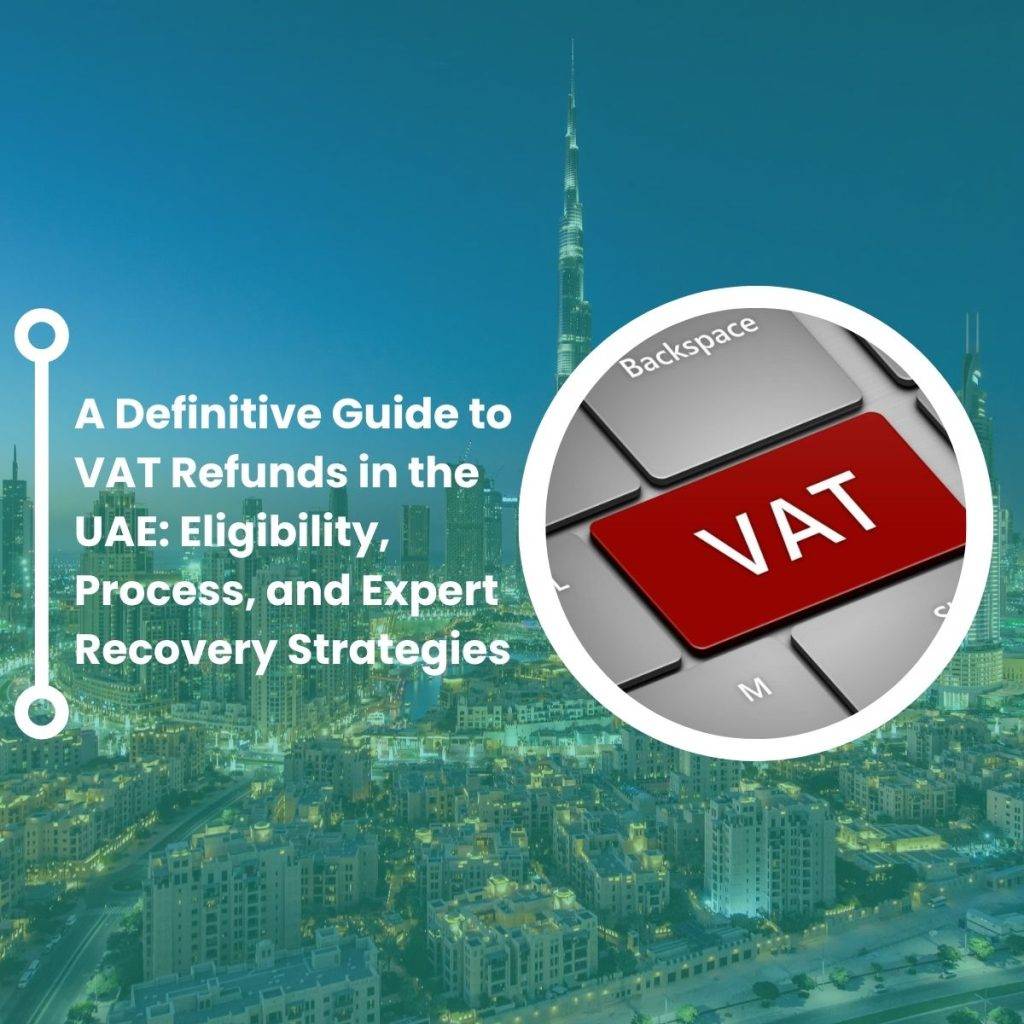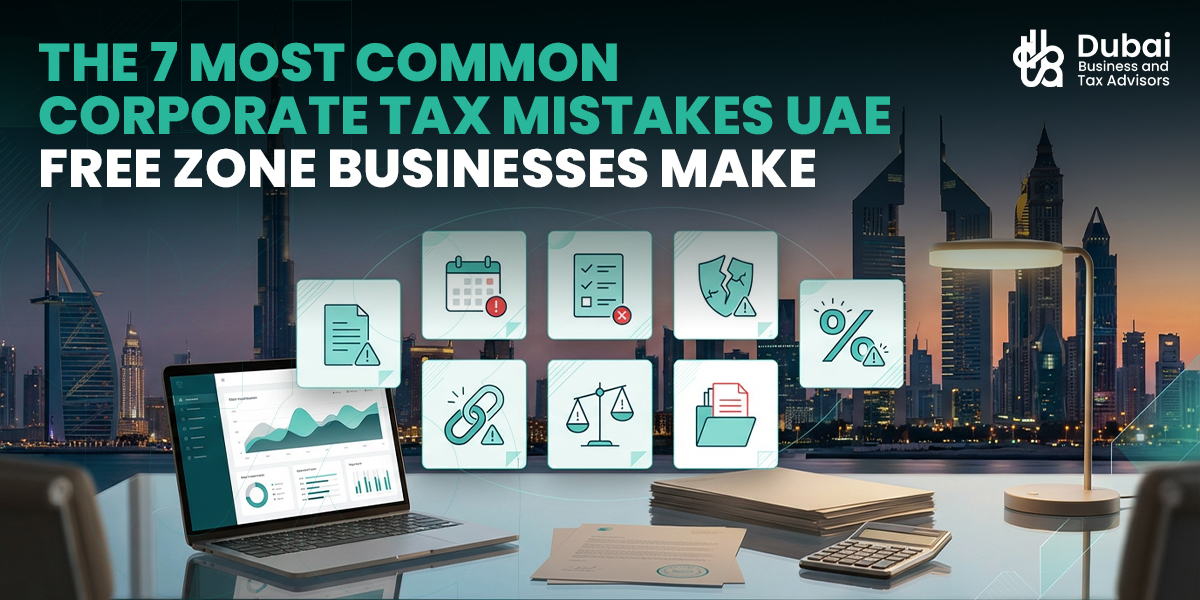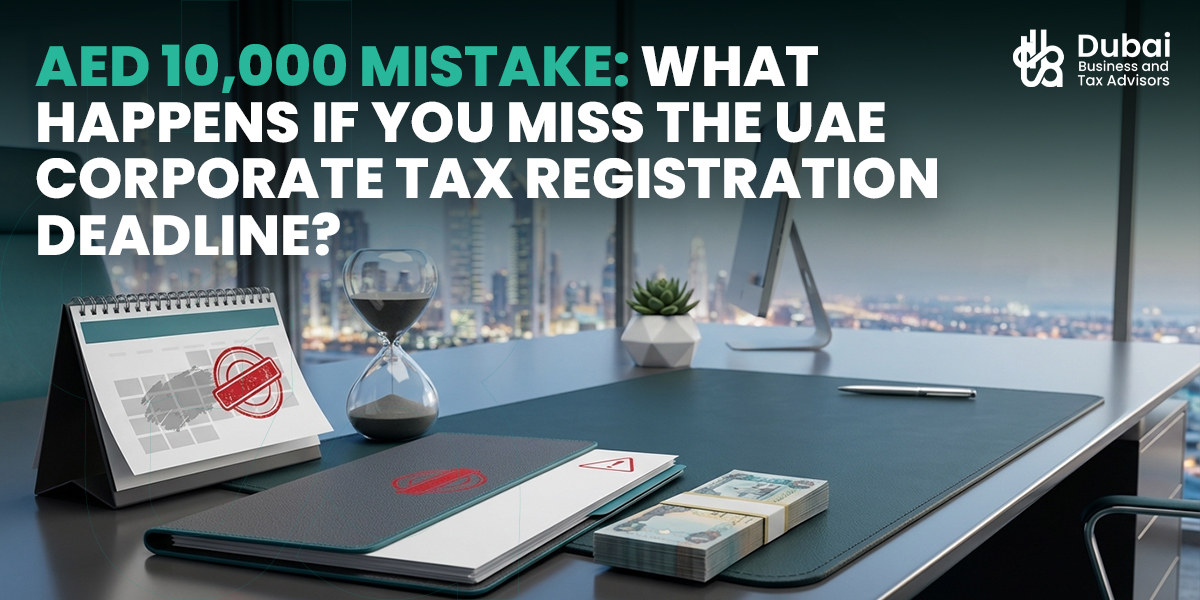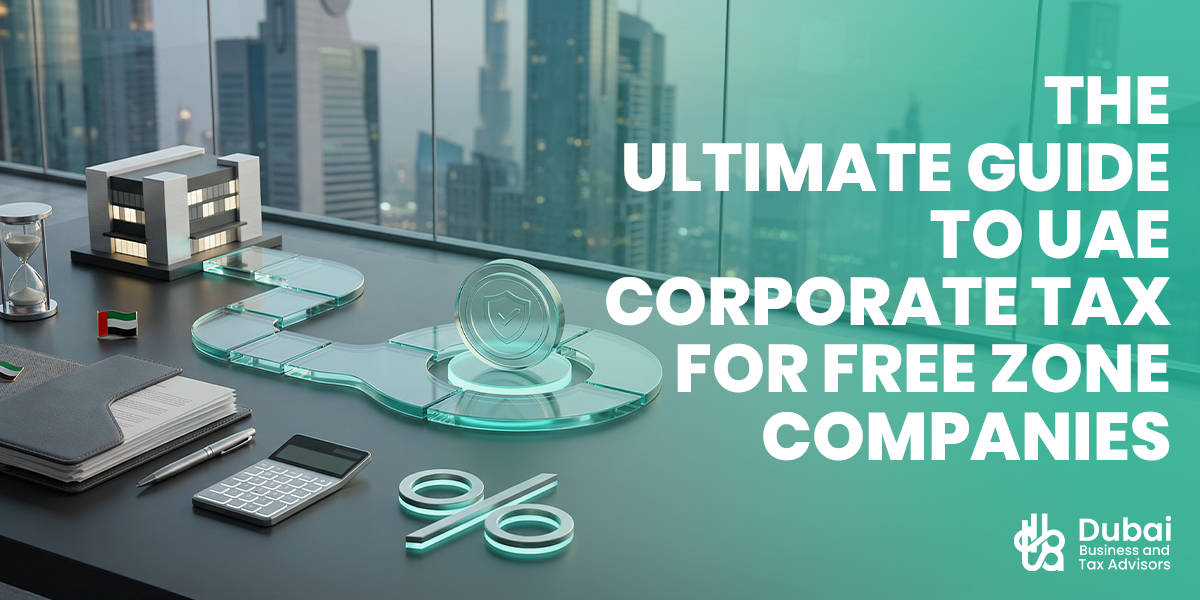A Definitive Guide to VAT Refunds in the UAE: Eligibility, Process, and Expert Recovery Strategies
Recent Insights

Table of Contents
Introduction: Unlocking Financial Recovery in the UAE
When VAT was first introduced in the UAE in 2018, it caught a lot of people off guard. A country known for being tax-free suddenly added a 5% charge on goods and services. Five percent does not sound like much, but anyone running a business or even a tourist doing a bit of shopping quickly notices the difference. And almost immediately, the big question came up: Is there a way to get some of that money back? The answer is yes. The government built the UAE VAT refund process to make sure that money paid into the system does not always have to stay there. For companies, being able to claim VAT back can improve cash flow and stop costs from piling up. Tourists, too, get their share of relief.
At the VAT refund Dubai airport counters, you will see travelers lining up with receipts, turning part of their holiday spending into a refund. The same idea applies to other groups: foreign companies, Emiratis building homes, and even event organizers, all covered under different VAT refund eligibility rules in the UAE. This guide is here to make sense of it. No jargon, no complicated charts, just a clear explanation of how to recover VAT in the UAE depending on who you are and what you need. And if you are running a business, remember that refunds work best when everything else is in order. Getting your UAE VAT registration right is one of those steps that makes the refund process smoother instead of stressful.
| Refund Category | Purpose | Key Eligibility | Required Documents | Claim Portal | Average Timeline |
|---|---|---|---|---|---|
| Tourists | Encourage shopping and tourism by refunding VAT on goods exported from UAE. | Non-resident visitors 18+; spend of AED 250 minimum. | Passport, original tax invoices, purchased goods with tags. | Planet Tax Free Kiosks/Desks | Immediate cash; ~9 days for cards. |
| UAE Businesses | To correct tax balance when input VAT exceeds output VAT. | VAT-registered business; excess input VAT. | Valid tax invoices and financial records. | FTA’s EmaraTax Portal (Form VAT311) | 20 business days for review; 5 days for payment. |
| Foreign Businesses | Facilitate international trade by allowing non-resident businesses to recover VAT. | No UAE establishment; from a country with reciprocal agreement. | Original Tax Compliance Certificate, tax invoices, proof of authority. | FTA’s EmaraTax Portal (VATGRB) | Up to 4 months for review and payment. |
| UAE Nationals | To relieve tax burden for citizens building new homes. | UAE national building a new personal residence. | Emirates ID, ownership proof, construction invoices. | FTA’s EmaraTax Portal (VATGRH1) | 30–60 days (~2 months) for review and payment. |
The Tourist’s Guide to VAT Refunds in the UAE
Walk through a mall in Dubai or Abu Dhabi, and you will see little stickers near the checkout that say, “Tax Free.” For visitors, that isn’t marketing fluff; it is the tourist VAT refund UAE scheme in action. The idea is simple: if you are not living here and you buy something you are taking home, you do not have to pay the VAT cost. Instead, you can get some of it back when you leave. It is a clever setup. Instead of juggling different providers, the government handed the entire system to one operator, Planet UAE, for a VAT refund. That means shops, airports, and even land borders are all linked through the same network. No messy paperwork, no running around. You buy from a registered store, keep your receipt, and when you are leaving, go through a VAT refund Dubai airport kiosk, where you just scan your documents.
In a couple of minutes, you either get cash in hand, or the money goes back to your account. What makes it work is how smooth it feels. You are not standing in line with stacks of forms; you are tapping on a screen before your flight boards. That little convenience makes a difference. People shop more; they remember the ease of it, and plenty come back knowing they will get a refund next time, too. And if your visit has you thinking beyond shopping, even about Dubai Business Setup, knowing how the VAT system works, it is a good first step in understanding how friendly the UAE can be for both travelers and entrepreneurs.
Eligibility & Exclusions: The Fine Print:
So, who gets to use the UAE tourist VAT refund system? It is simpler than people think, but there are catches. First off, you need to be a visitor. Not living here, not working here full-time, just passing through. You also must be over 18. That covers holidaymakers, folks here on short visas, and even business travelers who do not live in the Emirates. The ones who cannot? Airline and ship crew. They are counted as staff, not tourists, so there is no refund for them. Then comes the spending bit.
A VAT refund application UAE only works if you have spent at least AED 250 in a single shop that is registered with the scheme. Buy a T-shirt for AED 100. No luck. But grab a designer bag or a batch of electronics from a participating store, and you are good. And do not expect refunds on services, no money back on hotel nights, restaurant tabs, or car rentals. A few things are listed completely. Cars, boats, and planes are off the table. The same goes for anything you have eaten, worn, or used before you leave. That is why people always say keep your shopping sealed until you get to the airport.
The government only wants to refund VAT on goods leaving the country, not on things already consumed here. Makes sense when you think about it; taxes should follow where something is used. If you keep these rules in mind, the airport kiosks are smooth sailing. Miss one detail and it is a headache. And for visitors mixing business with pleasure, folding this into proper accounting Services in Dubai is worth it. You will know exactly what’s recoverable and what is not.
The Step-by-Step Process: From Purchase to Payout
If you’re a tourist trying to grab a VAT refund in Dubai, the routine isn’t complicated. It’s just three stages: you buy, you validate, you collect. Easy enough once you know what to expect.
Step 1: Shopping
The whole thing starts in the shop. Not every store is part of the program, so the first thing to do is look for the “Tax Free” sign. If it is there, you are good. At checkout, hand over your passport. The cashier links your purchase through the system and gives you either a special receipt or a digital tag tied to your ID. That’s it. Nothing fancy, just proof that what you bought is eligible.
Step 2: Validation
This is where people usually get caught out. Before you leave the country, you must validate everything. Airports, seaports, and even land borders all have kiosks or counters. You have got 90 days from the day you bought the item, so do not sit on it too long. At the airport, do it before check-in, because the goods need to be in your hands when you scan. Passports, invoices, and items are all shown together.
If the bag’s already in the hold, the system will not let you claim it. Pretty strict, but that is how it works. Mess this part up, and your UAE VAT refund application stops dead. Plan and it is smooth. And if you are someone who mixes travel with business, having proper Bookkeeping Services UAE behind you keeps all the paperwork lined up, so you do not waste time chasing receipts at the last minute.
Step 3: The Refund Phase
Once your receipts are validated, the system will show you the amount you will get back. Tourists do not get the full VAT. The refund is 85% of what was paid, with a small admin charge of AED 4.80 for each tax-free tag. It is not bad, and it adds up quickly if you have done a bit of shopping. Now, you pick how you want the money. Cash, card, or even a digital wallet like WeChat Pay or Alipay. Most people stick with cash or cards. There is a cap on cash refunds, though: AED 35,000. Anything higher automatically goes back to your bank account. For cards, it usually takes about a week or so, sometimes up to nine working days, to show up.
Navigating Key Locations: The setup is tourist friendly. At VAT refund Dubai Airport, you will find Planet counters and kiosks in Terminals 1, 2, and 3. They are usually in the departure areas, easy to spot before you even hit the check-in desks. Over at VAT refund Abu Dhabi Airport, and other exit points too, the routine is the same: receipts, goods, passport, quick scan, done. Here is a tip most people do not know: you do not have to wait until the airport.
Some spots, like the VAT refund Dubai Mall have pre-validation kiosks. You can sort your receipts there in advance, so when you get to the airport, the process is faster. Handy, if you have been on a shopping spree and do not want to juggle it all in a rush, you should be careful. And if you are here for more than shopping, running a small business trip alongside your holiday, tying this knowledge with UAE Corporate Tax planning can give you a clear picture of what is recoverable and where to save time.
Special Case: VAT Refund on Gold in Dubai
One question that comes up again is: can you get a VAT refund on gold in Dubai? The short answer is yes, but it depends on what you buy. Most gold jewelry, like rings, bangles, and necklaces, falls under the regular 5% VAT. If the shop is registered under the Tax Refund for Tourists Scheme, then tourists can claim it back just like any other item. It works the same way as claiming a VAT refund Dubai Mall purchase, provided the invoices and eligibility rules line up. But there is another side to it: investment-grade gold. That is gold with 99% purity or more.
Transactions involving this type of gold are usually “zero-rated,” which means no VAT is charged in the first place. There is a catch, though: this rule applies when the deal is between two VAT-registered businesses. For everyday consumers, buying investment gold at a store still means paying VAT, and in most cases, it is treated like a standard purchase. So, while the Dubai gold VAT refund is possible, it is not one-size-fits-all. Jewelry? Refundable, if you shop smart. Investment bars? Often zero-rated, but not always in the way tourists expect.
The Business Case: Reclaiming VAT for UAE Companies
When it comes to companies, the idea of a business VAT refund UAE is not a reward; it is a right. Every registered business in the Emirates can recover VAT that it pays on its expenses if it is tied to legitimate business activity. The key idea is something accountants call a “net refundable position”. Here is how it works: a business collects VAT on its sales (that’s output tax), but it also pays VAT on its purchases and costs (input tax). If the input outweighs the output in a tax period, the company is due for a refund. In practice, that means if you spent more on supplies, rent, or services than you collected from customers, you get to claim the difference back.
This is not just ticking a compliance box. Recovering VAT helps companies keep their cash flow healthy, especially for those with big capital expenses or firms that do a lot of zero-rated exports. The refund keeps money in the system instead of letting it get locked away in tax accounts. This is why so many firms treat the UAE VAT refund process as part of everyday financial strategy, not just an afterthought. And for businesses still finding their way around regulations, getting professional help with UAE VAT Registration makes the reclaiming process a lot smoother.
The Five Non-Negotiable Conditions for a VAT-Registered Business
For companies, the UAE VAT refund process comes with rules you cannot bend. The Federal Tax Authority (FTA) is very clear: if you miss even one condition, your claim can be knocked back or, worse, flagged for audit. Think of it less as “guidelines” and more as a checklist that must be ticked off every single time.
VAT Registration
You cannot claim a refund if you are not in the system. The business needs to be formally registered with the FTA and have a valid Tax Registration Number (TRN). No TRN, no refund.
Business Purpose
The VAT you are reclaiming has to come from a genuine business expense. That means no personal purchases, and no non-recoverable items like dinners with clients or entertainment for outsiders. Only costs that tie back to running the company count.
Valid Tax Invoice
This one is non-negotiable. You need a proper FTA-compliant invoice. It must show the VAT amount, the supplier’s TRN, and all the required details. Without it, the claim dies there.
Payment
The purchase must be paid for, or at the very least, there needs to be a clear obligation to pay the supplier. You cannot file claims on promises or unsigned deals.
Taxable Supplies
Finally, the VAT you are reclaiming must be connected to taxable supplies. That means goods or services that are standard rated (5%) or zero-rated (0%). Suppose your business deals in both taxable and exempt supplies; then only a portion of the input VAT can be reclaimed. It is about keeping the math fair. Missing one of these conditions does not just slow things down; it can result in penalties. That is why most companies’ fold VAT recovery into their regular accounting workflows rather than leaving it as an afterthought. And newcomers, working with professionals in accounting services in Dubai, can make sure each box is checked properly.
The Step-by-Step Business Refund Process
Unlike the tourist system, the business VAT refund UAE process is not about kiosks or boarding gates. It is fully digital and tied directly to the tax filing system. In practice, you claim refunds through your regular VAT return filings, with input VAT balanced against output VAT. If the input comes out higher, the difference shows up as a refundable credit. It is smooth on paper, but only if the documentation is airtight.
Step 1: File Your VAT Return
Here’s the thing: it all starts with your normal VAT return. Nothing special at this stage. You log in to EmaraTax, file Form 201 like you always do, and the system crunches up the numbers. It checks the VAT you collected (output) against the VAT you paid (input). If you have paid more than you collected, that is when you land in what is called a refundable position. In plain English: the FTA owes you money. That is the first sign that a business VAT refund in UAE is possible.
Step 2: Ask for the Refund
Having a credit balance is not enough; you must ask for it. That is done with Form VAT311 on the EmaraTax portal. It is not complicated, but it does need details of the claim and one extra thing: a bank validation letter. That letter is important because it proves the account belongs to your business and makes sure the refund is not sent somewhere it should not.
Step 3: Wait for the FTA
This part takes a bit of patience. The FTA looks over your claim. Normally, it is about 20 working days for them to review, and if all is well, the money hits your account in another five days. Sometimes they will come back asking for more paperwork, invoices, proof of payment, whatever is needed, and that stretches the timeline. The best way to avoid delays is to have your records tidy before you even file. And if keeping those records tight feels like a headache, it is worth looking into bookkeeping services UAE. That way, every invoice and receipt is already in place when it is time to claim through the UAE VAT refund process.
Common Pitfalls and How to Avoid Them
The UAE VAT refund process is built to be simple, but businesses still travel. Most delays and rejections come down to small mistakes that could have been avoided.
Wrong Input Tax Claims
One of the biggest errors is claiming VAT on things that are not eligible. For example, VAT on entertaining clients who are not employees. Not recoverable. Same with motor vehicles used personally by staff. Mixing up what is eligible and what is not can lead to penalties, and the FTA does not look kindly on misreporting.
Late Filing
Deadlines matter. Miss a VAT return or delay a refund application, and penalties kick in fast. The FTA has strict timelines, and sticking to them is the only way to keep things going smoothly.
Poor Record-Keeping
Here is where a lot of companies stumble. Every claim must be backed up with invoices and supporting documents. The FTA expects you to keep these for at least five years. Lose them, or submit ones that are not compliant, and you risk rejection or worse, an audit.
Special Case: VAT on Capital Assets and Refundable Deposits
Not all expenses fit neatly into the usual refund box. Some need extra attention.
Capital Asset Scheme
High-value items like machinery or buildings are treated differently. The FTA’s Capital Asset Scheme looks at input VAT over the useful life of the asset. That means you might recover VAT upfront, but if the asset later gets used for exempt or non-business purposes, the recovery gets adjusted. It is about matching tax treatment with real-world use.
Refundable Deposits
This one catches people off guard. A security deposit, like the kind held as a bond, is not subject to VAT if it is fully refundable. But if that deposit is considered a part payment for goods or services, then VAT applies at the time it is received. And if part of the deposit is later kept, say for damages, that amount becomes taxable too. In short, how you classify the deposit decides whether VAT is due. For companies juggling these kinds of expenses, having professional UAE VAT registration support ensures the tricky cases do not slip through the cracks.
Foreign Business Visitors: Recovering VAT in the UAE
The UAE does not just welcome tourists; it has also built systems for international businesses that fly in for work. The business visitor refund scheme gives foreign companies a way to recover VAT paid on things like hotels, conference fees, or even transport linked to business trips. For firms with no base in the Emirates, this refund can make a big difference: less tax stuck in expenses, and more reason to choose Dubai or Abu Dhabi for trade shows, exhibitions, or client meetings.
Who Qualifies (and Who Does not)
Not every company can apply the rules that are strict rules, and they come with a dose of international diplomacy. To qualify:
- The business must not have a permanent or fixed establishment in the UAE.
- It cannot already be VAT-registered here or required to register.
- It must be properly registered as a business back home with the relevant authority.
- Most importantly, the home country must have a reciprocal VAT refund agreement with the UAE. In other words, if your country does not let UAE firms reclaim VAT there, your company will not get the benefit here.
That last condition is what keeps the system balanced, its tax cooperation across borders, not a chaotic situation.
How the Application Works
Unlike a tourist who scans receipts at the airport, foreign businesses file once a year. Claims cover the prior calendar year and must be submitted between March 1 and August 31. There is also a minimum claim: AED 2,000 in refundable VAT. This threshold keeps the process efficient and avoids the FTA being buried under hundreds of tiny claims.
The paperwork is more demanding than a tourist refund. You will need:
- An original, attested Tax Compliance Certificate from your home country.
- Valid tax invoices and proof of payment.
- A copy of the authorized signatory’s passport.
- Proof that the signatory is allowed to act on behalf of the business.
Once everything is in, the FTA reviews the file. If nothing is missing, refunds will be processed within about four months. For companies that see the UAE as a regular destination for trade, exhibitions, or client work, this scheme is a valuable tool. And if the paperwork feels heavy, leaning on Corporate Tax UAE professionals can make the application smoother and reduce the risk of delays.
A Special Scheme: VAT Refunds for UAE Nationals Building New Homes:
Most people know about tourist refunds and business refunds. But here is something a lot of outsiders do not realize there is a special setup just for Emiratis. It is not about shopping or trade shows; it is about homes. The government lets UAE nationals claim back VAT they have paid while building a new house for themselves. Think of it less as a tax benefit and more as a social support program, helping families cut down the cost of creating a place to live.
Who Qualifies and What Counts:
The rules are simple. You have to be a UAE national. And the home must be brand new, built for you and your family to live in, not to flip, rent out, or sell. What counts? Anything that’s part of the building itself. Cement, pipes, flooring (not carpets, though), windows, doors, air conditioning, and things fixed into the walls and structure. Contractors’ services are in, too. If it becomes part of the house, it is usually covered.
How the Refund Works:
Here is the catch: timing. You need to apply within 12 months of finishing the project. Miss that deadline and the claim is gone. The application is filed online with the FTA, and they will want paperwork: ownership of proof, permits, invoices, and receipts. If everything lines up, the FTA usually signs off within a month or two. The money comes back quickly compared to other schemes, which makes this one helpful when you have just poured savings into construction. For many Emirati families, this refund is more than just numbers on paper. It takes some of the pressure off and makes the dream of building a personal home more affordable. And just like with business refunds, having someone who knows their way around Accounting Services in Dubai can keep the process smooth and stress-free.
How Dubai Business and Tax Advisors (DBTA) Elevates Your Refund Process:
The truth is, getting a UAE VAT refund is not always as simple as it looks on paper. Yes, the system is online now, and yes, the FTA has made it easier. But the rules? They are still detailed, and missing even one small requirement can hold things up. That is what trips most people up: the paperwork, the deadlines, the fine print. This is where DBTA steps in. They do not just fill out forms. They look at your situation and find out what you can claim. For companies, that might mean spotting eligible costs you did not think about, even under tricky areas like the Capital Asset Scheme.
They also make sure returns are filed properly and on time, so you do not get hit with delays or penalties. For tourists and foreign firms, it works a little differently. DBTA helps check if you qualify in the first place, sorts out the documents you will need, and deals with the authorities when required. In short, they take the stress out of the VAT refund application UAE, so you are not left scrambling at the last minute. Handing this process over to DBTA means one less headache. Instead of worrying about whether you have done it right, you can get back to running your business or enjoying your trip, knowing the refund side is being handled by people who do this every day.
FAQs
If you are a tourist, the process starts in the store. Buy from a retailer with the “Tax Free” logo, show your passport, and they will issue a tax-free invoice with a digital tag. Before leaving the country, head to a Planet Tax Free kiosk or desk at the airport, seaport, or land border. Scan your documents and show the goods; they must still be with you and unused. Do not wait too long, though; validation must happen within 90 days (about 3 months) of purchase. That is the only way to get your tourist VAT refund UAE processed.
At Dubai International Airport, look for the Planet counters or self-service kiosks. They are in the departure areas of Terminals 1, 2, and 3. Important tip: validate your receipts before you check in your bags, since the items may need to be inspected. Many people forget this and end up stuck with no goods in hand, no refunds. The VAT refund Dubai airport system is efficient, but only if you follow the steps in order.
For tourists, you do not get the full amount back. The system refunds 85% of the VAT you paid, and AED 4.80 is deducted per tax-free invoice. For businesses, or UAE nationals building a new home, the refund is usually 100% of the eligible VAT provided all the paperwork is in order. So, the answer depends on who you are and what you are claiming.
For tourists, there are two main steps: buy from a participating shop and get the tax-free invoice, then validate it before you leave. That can be done at airports, seaports, or even pre-validation kiosks in malls like Dubai Mall. For companies, the route is digital to file the return, request the refund through EmaraTax, and wait for FTA approval. In both cases, the VAT refund Dubai process only works if the documents and timing are right.
Conclusion: A Strategic Approach to VAT Refunds
The truth is that the UAE VAT refund process is not one-size-fits-all. Tourists get the quick digital system through Planet kiosks at airports and malls. Businesses go through the EmaraTax portal, with every claim tied to accurate records and careful filing. Foreign companies file once a year under the business visitor scheme, and Emiratis even have a homebuilding refund designed to ease the cost of putting up a new residence. Separate groups, different rules, but the goal is always the same: to make sure VAT does not stay locked in when it should not.
In practice, success comes down to the details. Knowing what is eligible, having the right invoices, and filing on time are important. Miss any of those, and a claim can be delayed or knocked back completely. For businesses, the process often says a lot about how disciplined they are with compliance. The FTA pays close attention to governance and record-keeping.
Latest news & articles

The 7 Most Common Corporate Tax Mistakes UAE Free Zone Businesses Make: Avoiding the 5-Year Disqualification
Read More »
AED 10,000 Mistake: What Happens If You Miss the UAE Corporate Tax Registration Deadline?
Read More »About the Author:
AURANGZAIB CHAWLA
As CEO of DBTA, Aurangzaib Chawla advises globally mobile businesses and individuals on cross-border tax planning and structuring. With expertise spanning the UK, UAE, and wider GCC, Zaib helps clients minimise double taxation, protect assets, and achieve long-term financial efficiency while staying fully compliant.
Planning to launch in Dubai or the UAE?
Let’s talk about how to structure your business for growth the smart, compliant, and tax-efficient way
About the Author:
AURANGZAIB CHAWLA

As CEO of DBTA, Aurangzaib Chawla advises globally mobile businesses
and individuals on cross-border tax planning and structuring. With expertise spanning the UK, UAE, and wider GCC, Zaib helps clients minimise double taxation, protect assets, and achieve long-term financial efficiency while staying fully compliant.
Planning to launch in Dubai or the UAE?
Let’s talk about how to structure your business for growth the smart, compliant, and tax-efficient way.








